- News
- Reviews
- Bikes
- Accessories
- Accessories - misc
- Computer mounts
- Bags
- Bar ends
- Bike bags & cases
- Bottle cages
- Bottles
- Cameras
- Car racks
- Child seats
- Computers
- Glasses
- GPS units
- Helmets
- Lights - front
- Lights - rear
- Lights - sets
- Locks
- Mirrors
- Mudguards
- Racks
- Pumps & CO2 inflators
- Puncture kits
- Reflectives
- Smart watches
- Stands and racks
- Trailers
- Clothing
- Components
- Bar tape & grips
- Bottom brackets
- Brake & gear cables
- Brake & STI levers
- Brake pads & spares
- Brakes
- Cassettes & freewheels
- Chains
- Chainsets & chainrings
- Derailleurs - front
- Derailleurs - rear
- Forks
- Gear levers & shifters
- Groupsets
- Handlebars & extensions
- Headsets
- Hubs
- Inner tubes
- Pedals
- Quick releases & skewers
- Saddles
- Seatposts
- Stems
- Wheels
- Tyres
- Health, fitness and nutrition
- Tools and workshop
- Miscellaneous
- Tubeless valves
- Buyers Guides
- Features
- Forum
- Recommends
- Podcast
review
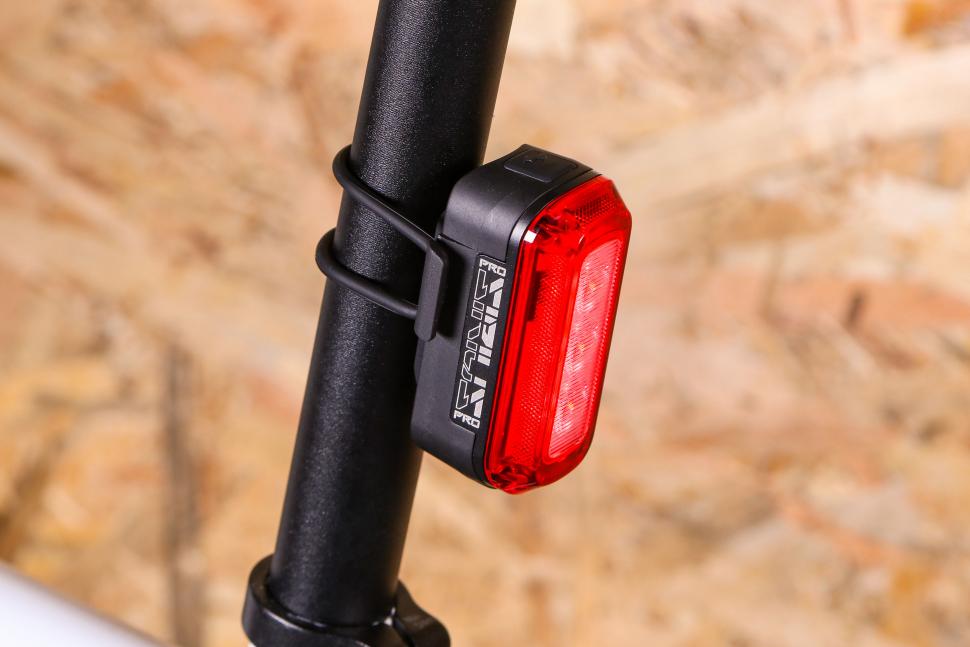 2020 Moon Sirus Pro 350
2020 Moon Sirus Pro 350£54.99
VERDICT:
Superbright and high quality rear light but also rather complicated
USB-C port
Run-times
IPX7 rating
Bright!
Complex
Mode overkill
Braking function got confused in night-time group rides
Weight:
79g
Contact:
At road.cc every product is thoroughly tested for as long as it takes to get a proper insight into how well it works. Our reviewers are experienced cyclists that we trust to be objective. While we strive to ensure that opinions expressed are backed up by facts, reviews are by their nature an informed opinion, not a definitive verdict. We don't intentionally try to break anything (except locks) but we do try to look for weak points in any design. The overall score is not just an average of the other scores: it reflects both a product's function and value – with value determined by how a product compares with items of similar spec, quality, and price.
What the road.cc scores meanGood scores are more common than bad, because fortunately good products are more common than bad.
- Exceptional
- Excellent
- Very Good
- Good
- Quite good
- Average
- Not so good
- Poor
- Bad
- Appalling
The Moon Sirius Pro 350 is a seriously bright rear light that's packed full of tech. Run-times are excellent and there's a huge range of modes for every condition, day or night. However, navigating them does take some time to learn – a thorough read of the manual is a must.
The Sirius Pro feels robust, with a CNC aluminium casing and 79g weight. The lens allows for 120-degree visibility and also has a reflector for when the light isn't turned on.
Its IPX7 water resistance means it can be submerged up to a metre for 30 minutes. Although that in itself isn't particularly useful, it does mean it should withstand many a soggy British winter without packing up. I've been using the light for about six weeks now in some pretty grim conditions and it's doing well so far.
Lumens and run-times
Lots of new rear lights are boasting superbright daylight modes but there aren't many that can pump out a whopping 350 lumens. Unlike many daylight modes, this one will actually last the whole ride, too – 13 hours, in fact. That's loads more than the 2 hours on the Ravemen TR300 that I recently tested, although the superbright flashes on the Moon are slightly less frequent. Even so, in a busy urban environment I was confident that I was being noticed, and when it was strapped to the back of a mate's bike I was seriously impressed with how eye-catching the light was, even in bright sunlight.
Burn-times in other modes are impressive as well, but this is also where things start to get a bit more complicated...
Out of the box you can turn on the light with a single press. Fine. Next, you can choose the brightness with another single press, or switch to the flashing modes with a double press of the button, and once there you scroll through the flash modes, once again with a single press. To turn it off you simply press and hold for a few seconds.
All of that is fine; I just wish that Moon had stopped there because once you throw in 'Intelligent brightness' which changes all the modes depending on whether it's day or night, VLS (variable lumen system) to customise modes AND braking modes, for good measure, I was pretty stumped and had no idea what mode I was in for the first few weeks of testing.
I wouldn't class myself as a technophobe and have familiarised myself with countless lights, so I think it's a case of Moon simply cramming too much functionality into something that didn't really need it.
The standard modes and claimed run-times are as follows:
- Day Flash: 350 Lumens - 13hrs run-time
- Steady Flash: 60 Lumens - 12hrs
- Flash 1: 30 Lumens - 22hrs
- Mode 1: 80 Lumens - 2hrs
- Group Ride Mode: 6 Lumens - 25hrs
More modes and features
First up, I'll start with the useful ones...
The Sirius Pro has a lock – you press the button for five seconds and the light is inoperable until another five-second press. This is great for if you plan on chucking the light in a bag or travelling with it as it prevents accidental use.
It also has a memory function, which means it'll turn on in whatever mode you turned it off in, especially useful given the light's complicated nature.
Features I found less useful include the VLS (variable lumen system) that I mentioned earlier. This allows you to override the factory modes with your own brightness preference, so anything from 10-350 lumens for flash modes, and 10-80 lumens in solid modes. I would have been perfectly happy with a high, medium and low setting to avoid any potential confusion. I feel this feature is trying to fix something that isn't really a problem – for me, anyway.
Next up, the braking mode. Personally, I'm not a fan. I think that a light should get you noticed the whole time – car drivers aren't likely to associate the change with a decrease in speed, and I also don't like how braking modes reduce run-times.
That said, Moon's is one of the best lights I've seen with a braking mode; in daytime the light will brighten to 200 lumens, or 150 lumens at night. Both of these are REALLY bright and stand the best chance of being associated with decelerating rather than manic flashing like some other lights.
> Buyer’s Guide: 18 of the best rear lights for cycling
However, on some group night rides I found that I was repeatedly blinding my compatriots with every deceleration. This shouldn't have been the case because, in group ride mode (6 lumens), the light should only brighten to 20 lumens under braking. I don't know whether the lights behind were tricking the Sirius into thinking it was daytime and turning group ride mode off, or what, but it was less than ideal.
On a more positive note, the parking mode, where the light dims after 20 seconds of no movement and turns off after 40 seconds, worked well and is a good way of saving battery at the café; just make sure you turn off the light properly when you get home as leaving it on standby will drain the battery.
A further feature that most lights do not yet have is USB-C charging; this appears to be the future and for many people will mean they can use the same charger lead as their phone. Despite using the newer connector, charging is still limited to the standard 5V which enables the light to be charged in about 3.5 hours, not bad considering how long the burn-times are, but it also feels like a missed opportunity.
Mount
In the box you'll find two rubber pads for the back of the light, one for seatposts with an aero trailing edge and another for round posts. On my Specialized Venge with kamm tail style seatpost, I found that the standard round pad worked well, and the light was held securely on both this bike and standard round seatposts.
The rubber O-rings for mounting the light are a simple solution but work well, and a few different lengths mean that seatposts from 20mm to 52mm can be accommodated.
Value
At £55 the Sirius Pro sits at the premium end of the rear light market, but it does have the stats to back it up. The Moon's run-times are superior to the cheaper Ravemen TR300 (£49.99) that I mentioned earlier, although that is easier to use.
Compared with the Exposure TraceR with ReAKT and Peloton (£65) it delivers a fair bit more firepower, but this does come at the cost of a bulkier unit.
Or for the same RRP, there's the no-nonsense Knog Blinder R70 which lacks nearly all of the clever features and has worse run-times, but would still be high up my list for just getting the job done.
Conclusion
Overall, the Sirius Pro 350 has all the hardware you could possibly ask for, a massive 350-lumen max output, great run-times, USB-C port, high-quality casing with IPX7 rating, and a simple yet effective mounting method. The light begins to come unstuck when it comes to software: for me, Moon has just tried to cram too many features into it, which, instead of adding usability, detracts from the overall function.
If you're prepared to revise the manual (there's a link here), this could be a great light, but for any technophobe or someone who wants a mount-and-ride light, it probably isn't the one for you.
Verdict
Superbright and high quality rear light but also rather complicated
road.cc test report
Make and model: Moon Sirius Pro 350
Size tested: 350 Lumens
Tell us what the light is for, and who it's aimed at. What do the manufacturers say about it? How does that compare to your own feelings about it?
Moon says that the Sirius Pro 350 is its "most intelligent rear bicycle light with no fewer than five different modes boasting automatic brightness and motion-sensing functions, you'll be amazed at what this light can do! Suitable for riding both on and off-road, once you've tried the Sirius, going back to a regular rear light simply won't be an option."
The light is superbright, so ideal for daytime riding, but the modes are extremely complicated to use and navigate, meaning that the light is best suited to someone who is tech savvy and willing to put the time in to learning.
Tell us some more about the technical aspects of the light?
From Moon:
5 Modes: DAY FLASH / STEADY FLASH / FLASH 1 / MODE 1/ GROUP RIDE MODE
Total Angle 120°
CNC Aluminum heat sink casing
Intelligent brightness function
Intelligent motion sensing function
Lock Mode
Auto safe mode
Mode memory function
Variable Lumen System
Low battery, charging and fully charged indicator
Automatic fully charged cut-off system
Side visibility
Water resistance (IPX 7)
Rechargeable lithium polymer battery
USB Type-C charging cable
Recharge Time: 3:30 hrs
Size ( W x D x H): 42X32X71mm
Weight: 79g
Max. Intelligent operation standby time: 300 hrs
Max. auto on/off standby time: 250 hrs
Rate the light for quality of construction:
9/10
Well made aluminium body.
Rate the light for design and ease of use. How simple was the light to use?
5/10
So many functions and only one button...
Rate the light for the design and usability of the clamping system/s
8/10
Simple and easy to use, held the light tightly with no movement, and the extra tabs on the "wings" aid security.
Rate the light for waterproofing. How did it stand up to the elements?
9/10
Rate the light for battery life. How long did it last? How long did it take to recharge?
7/10
Braking mode will reduce burn times depending on use; recharging is fairly average.
Rate the light for performance:
8/10
Rate the light for durability:
8/10
No issues.
Rate the light for weight:
6/10
Fairly average for a rear light but run-times are excellent considering this.
Rate the light for value:
5/10
IPX7 rating means it should last a while and it feels well built, but it's not cheap. It does have a lot of features, but I could do without most of them.
Tell us how the light performed overall when used for its designed purpose
For solo riding it worked well, once you work it out. It's bright and the button is easy to use when on the bike. For group rides, I found the braking function annoying and it was hard to tell which mode the light was in.
Tell us what you particularly liked about the light
Daytime visibility.
Tell us what you particularly disliked about the light
How complicated it is to use.
How does the price compare to that of similar products in the market, including ones recently tested on road.cc?
As mentioned in the review, it is expensive but it doesn't stack up too badly in the premium rear light market thanks to the higher lumen count and longer run-times than its competition. However, many of those other lights are easier to use...
Did you enjoy using the light? At times.
Would you consider buying the light? No
Would you recommend the light to a friend? A few.
Use this box to explain your overall score
I think it's a good light that could be very good: the excellent run-times and visibility are undeniable. Its IPX7 rating should mean that it lasts a while, and the braking feature is also very good (if you like that kind of thing) for solo riding. Some of the features are genuinely useful, but there's an overwhelming sense of over-complexity, fixing issues that aren't really issues at all.
About the tester
Age: 22
I usually ride: Specialized venge pro 2019 My best bike is:
I've been riding for: 5-10 years I ride: Every day I would class myself as: Expert
I regularly do the following types of riding: road racing, time trialling, cyclo cross, commuting, club rides, sportives, general fitness riding, mtb,
Jamie has been riding bikes since a tender age but really caught the bug for racing and reviewing whilst studying towards a master's in Mechanical engineering at Swansea University. Having graduated, he decided he really quite liked working with bikes and is now a full-time addition to the road.cc team. When not writing about tech news or working on the Youtube channel, you can still find him racing local crits trying to cling on to his cat 2 licence...and missing every break going...
Latest Comments
- mctrials23 2 sec ago
If people didn't let other drivers out there would be absolute carnage at any remotely busy time. There are so many junctions around me that rely...
- S.E. 13 min 46 sec ago
I'm not doing single track (no suspensions, only 30, 35 mm tyres) so 800 lumen is enough for me, on gravel type of trails at maybe max 20-30 km/h,...
- wtjs 49 min 20 sec ago
This would be very important if it didn't look like a false picture. There appear to be 3 chainrings! Can't see a crank break and it just looks...
- Cycle Happy 1 hour 37 min ago
The problem for me with this layout is where are the junctions? My understanding of rule H2 is that pedestrians do not have priority at the exits...
- Joe Bloggs 2 hours 58 min ago
I suppose journalists can just about be forgiven for not knowing the difference between CdA and Cd but supposed Engineers can't. CdA is NOT the...
- ktache 3 hours 35 min ago
There is a pHd student at work who has an Adidas backpack in reflective iridescence, looks oil slicky in the day. I love both oil slick and...
- jrg_uk 3 hours 36 min ago
I think what you say has some sense to it (for WBD)....
- Simon E 4 hours 46 min ago
A generation (or more) of cycling fans owe a huge amount to Gary Imlach and the C4 / ITV teams for their cycling coverage on TV, especially Gary's...
- MattieKempy 6 hours 11 min ago
Currently watching the Cyclocross Worlds on www.Sporza.be using my vpn, which I have anyway, free through my bank account. OK, so it's in Dutch,...
- rickiecheese 7 hours 42 min ago
An update regarding this path....
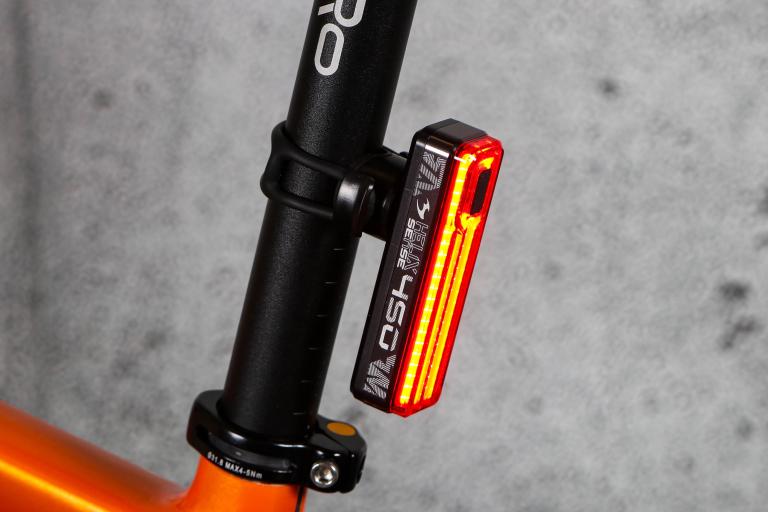
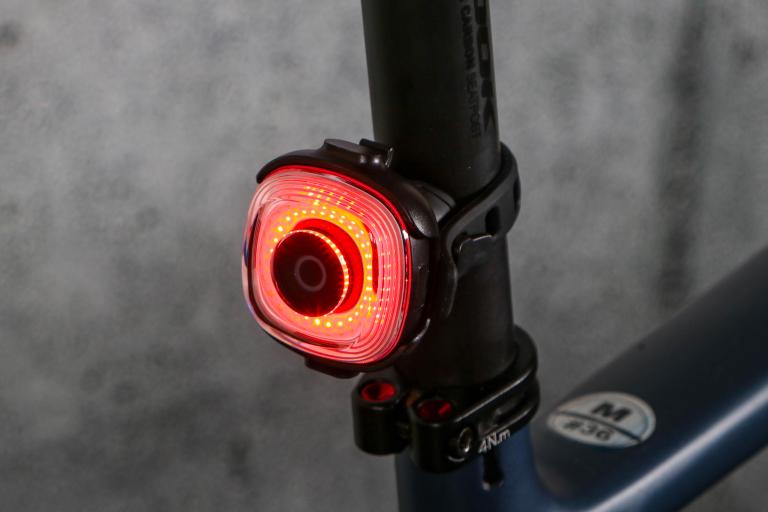
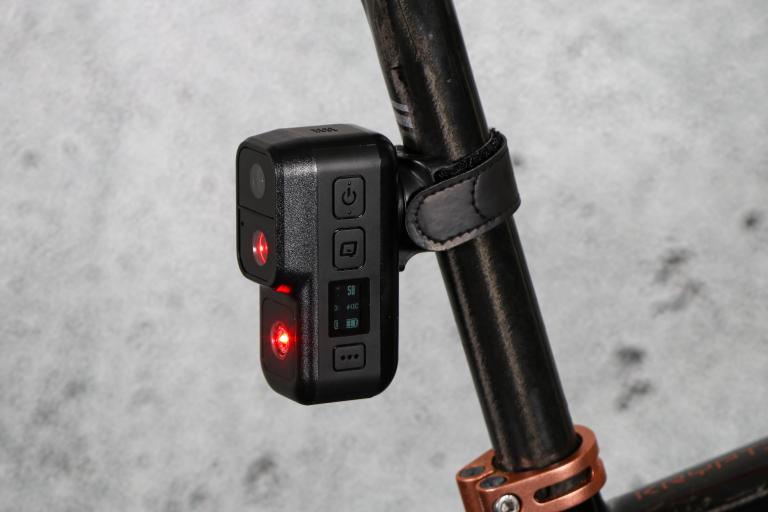
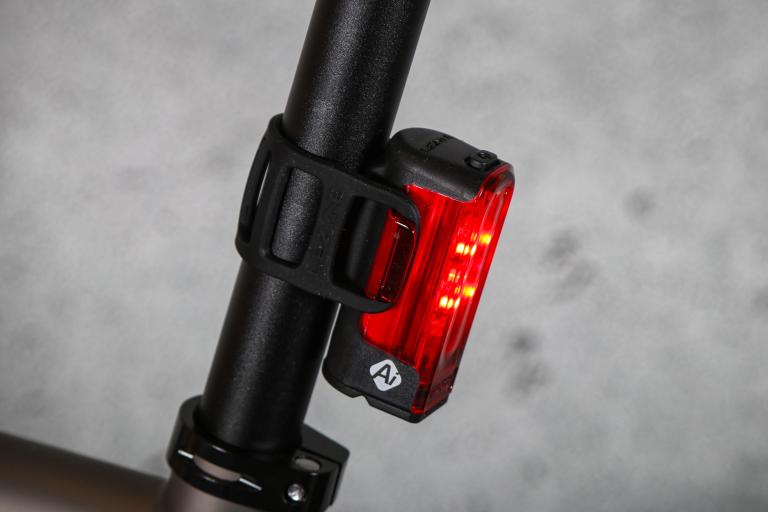
Add new comment
5 comments
Bought one of these. In day flash mode (350 lum) should get 13 hours run time, but on max i get 4 h! Don't realy know if i got a faulty unit, or run time claims are complitly off.
Finally, some USB-C lights coming. It's about time! Looks a bit chunky but the run times are excellent!
In my experience of Moon lights, they are often not v durable. They're great while they last but typically fail to charge after a year or two
I've experienced the same with the Meteor Storm front light. I wondered if it was the battery pack but I didn't think the high cost of a new pack was worth the risk. Before it completely died the functionality became quite erratic; it would not cycle through the modes or would get stuck on one flash mode or one continuous mode. I have replaced it with another Moon though. The wee Meteor was heavily discounted so I've opted for that. I used to leave the lights on the bike all through the winter and have elected to bring them in to the warm and dry after every ride to see if this makes a difference to its durability.
Still WAY better than Lezyne from my experience.
Amen to that!
As to the automagic (intelligent brightness, brake light) functionality, is it possible to disable it so that the light just does what you set it to do?
And the auto-sleep thing seems alarming. If you have to stop at the roadside for any reason, after just 40 seconds you've no rear light, what - unless you keep jiggling the bike to keep the light awake?! Tell me the auto-sleep function is optional, please.
Are the gaps filled by less bright flashes, or is it just a case of long dark gaps between the superbright flashes?